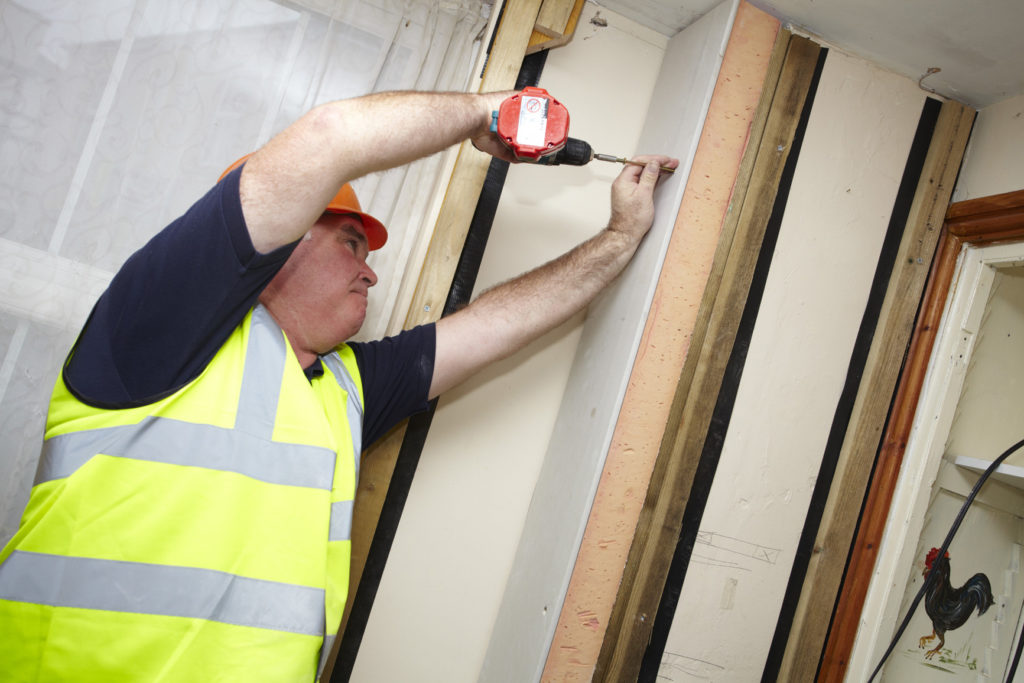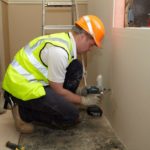Jonathan Ducker, Head of Regulatory Affairs at Kingspan Insulation UK, discusses PAS 2035, which covers the design of domestic energy efficiency retrofits.
Considerable progress has been made to address the energy performance of dwellings over the past three decades, with research showing that average UK household emissions from heating fell by over 60% between 1990 and 2017. To meet the net zero carbon goal by 2050, however, the Committee on Climate Change estimates that this figure must fall again by almost 95%, from an average of 2,745 kgCO2 e to just 138 kgCO2 e.
One of the key challenges facing local authorities and housing associations attempting to lift existing properties towards this level is the so called ‘performance gap’ between the expected and actual emission reductions achieved as a result of energy efficiency measures. To address this, a new publicly available specification (PAS) has been introduced covering the design of domestic energy efficiency retrofits.
PAS 2035 came into effect in June 2019 and applies to all existing dwelling categories including social housing. The document addresses how domestic Energy Efficiency Measures (EEM) should be selected and prioritised in response to the particular characteristics of each building, considers the interactions between measures and clarifies the responsibilities and qualifications for individuals involved in the retrofit process. It dovetails with an updated version of PAS 2030 which covers the installation, commissioning and hand-over of retrofit projects, creating a comprehensive framework designed to ensure both quality and value in energy efficiency retrofits.
Holistic approach
At the core of this new framework is a commitment to a so called ‘whole house approach’. This essentially means that before any EEMs are implemented, the property should be thoroughly assessed to understand its existing design and to create a holistic, 25-year plan for upgrading its performance. This assessment will consider a variety of factors, which might affect the appropriateness and scheduling of EEMs including the building’s age, condition, construction method, orientation, geographic location and a number of other relevant aspects of its design and use.
The specification also identifies fabric first EEMs, which are designed to improve the thermal performance and airtightness of the building envelope, as taking priority above work to introduce or upgrade renewable or building service technologies.
Beyond the design and specification of measures, PAS 2035 looks to place the occupant voice at the centre of the refurbishment process. It requires occupants to be fully advised of the improvement plan for their property and how they should maintain it after work is completed to maximise its energy efficiency. There is also guidance on how properties can be monitored and evaluated (where appropriate) and how learning can be fed back into the industry.
Roles and responsibilities
PAS 2035 sets out a clear, phased process for the assessment, design and specification of each property’s retrofit, which is outlined below.
A retrofit advisor first sits down with the building owner and discusses options for reducing energy consumption, both through improvements to the property and changes in occupant behaviour. If they opt to further explore improvement opportunities, then a Retrofit Assessment is undertaken by a Retrofit Assessor. This includes an Energy Assessment of the property, an Occupancy Assessment and a Condition Assessment.
A Retrofit Coordinator will take the outputs from the three parts of the Retrofit Assessment and create a Medium-Term Improvement Plan for the next 25 years. The Retrofit Coordinator must be satisfied that the condition of the property (especially in relation to ventilation) is appropriate for the building, the occupants and the intended measures.
Only once the Retrofit Coordinator is satisfied can the installation of measures commence. These will be sequenced to maximise long-term benefits for the homeowner. The Retrofit Coordinator commissions the design of the measures, contracts the installer and acts as the homeowner’s advocate if there are any issues.
Retrofit Designers will design improvement measures, paying particular attention to interfaces (junctions) where multiple improvement measures meet. PAS 2035 also requires that lessons are fed back to all parts of the supply chain, including the building owner and occupants.

Government TrustMark deadline
The new PAS 2030 and PAS 2035 have both been introduced as part of a wider programme to raise standards in energy efficiency retrofits as a response to the Each Home Counts review. The review’s recommendations were first published back in 2016 and key amongst them was the need to establish an overarching quality mark for energy efficiency retrofit practitioners. As a result, the Government TrustMark scheme was expanded to include the repair, maintenance and improvement, retrofit and energy efficiency sectors.
A transitional period has been set to give firms the chance to get up to standard and be certified. This period has now been extended to 24-months meaning that by 1st June 2021, all firms wishing to trade under the TrustMark scheme must be certified to PAS 2030 and compliant with the requirements within PAS 2035. It is expected that all future government supported retrofit schemes, including a revised version of the Energy Company Obligation (ECO) will require work to be completed by TrustMark registered companies.
Quality and consistency
The age and diverse design and construction of the UK’s housing stock means that it is essential that any energy efficiency measures are carefully considered in relation to each specific project. The introduction of the new PAS 2035 and revised PAS 2030 should help to ensure that measures are appropriately specified, properly installed and deliver the expected savings in emissions and energy. By creating a 25-year plan, they should also allow local authorities and housing associations to plan and budget for scheduled improvements over the coming years, enabling them to stay on top of tightening regulatory requirements and ultimately deliver a better experience for occupants.
Header image caption: PAS 2035 covers a wide range of EEMs for building fabric including the installation of internal wall insulation such as Kingspan Kooltherm K118 Insulated Plasterboard.









